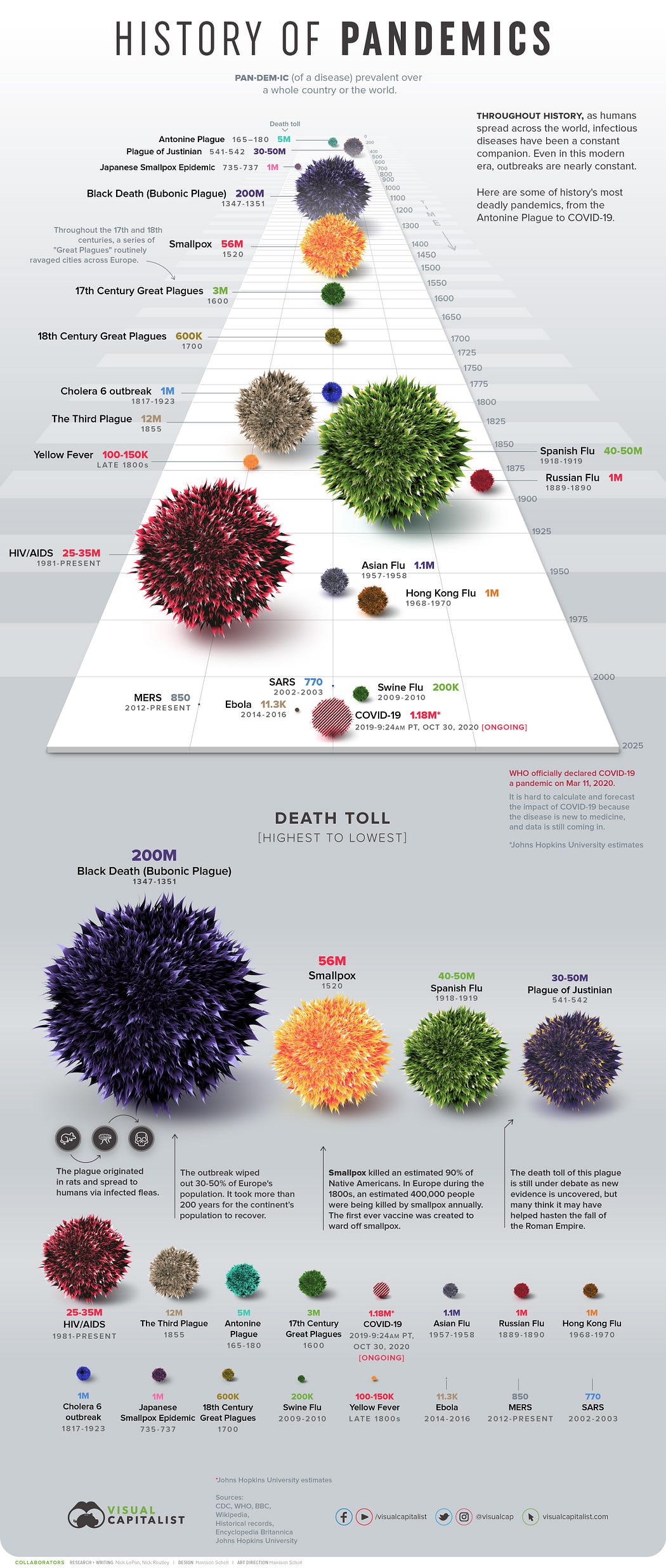History of Pandemics
Pan·dem·ic /panˈdemik/ (of a disease) prevalent over a whole country or the world.

As humans have spread across the world, so have infectious diseases. Even in this modern era, outbreaks are nearly constant, though not every outbreak reaches pandemic level as COVID-19 has.
Today’s visualization outlines some of history’s most deadly pandemics, from the Antonine Plague to the current COVID-19 event.
A Timeline of Historical Pandemics
Disease and illnesses have plagued humanity since the earliest days, our mortal flaw. However, it was not until the marked shift to agrarian communities that the scale and spread of these diseases increased dramatically.
Widespread trade created new opportunities for human and animal interactions that sped up such epidemics. Malaria, tuberculosis, leprosy, influenza, smallpox, and others first appeared during these early years.
The more civilized humans became — with larger cities, more exotic trade routes, and increased contact with different populations of people, animals, and ecosystems — the more likely pandemics would occur.